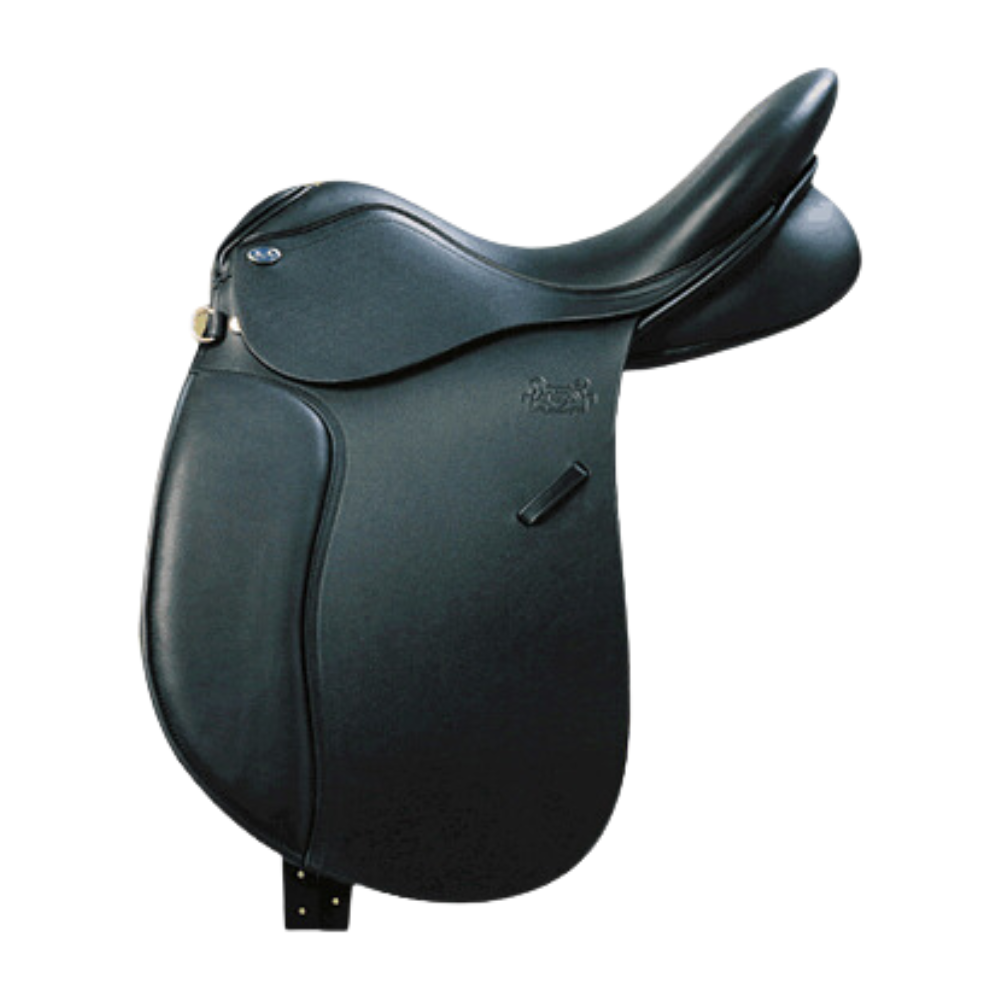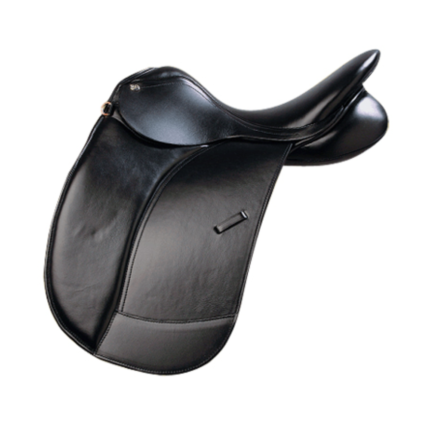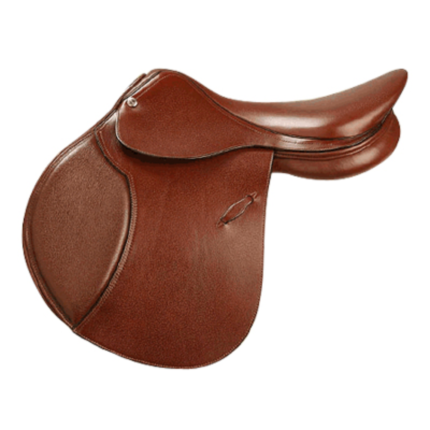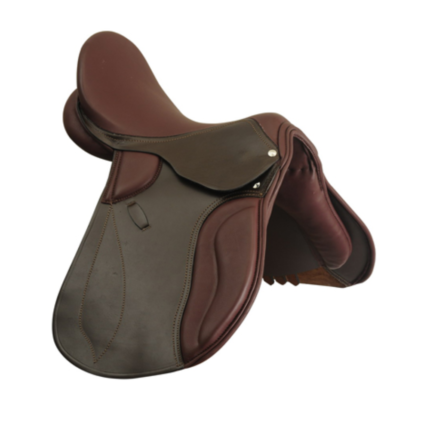A dressage saddle is a type of English saddle specifically designed to facilitate the precise movements and balanced posture required in the sport of dressage. Here’s a comprehensive overview of a dressage saddle:
Functionality
- Support and Stability: Dressage saddles are designed to support the rider’s seat and encourage a deep, balanced position, which is crucial for executing the precise movements in dressage.
- Enhanced Communication: The close contact design allows for subtle aids and effective communication between the rider and the horse.
- Comfort: These saddles are built to provide maximum comfort for both the horse and rider during prolonged periods of riding.
Design and Features
- Deep Seat: The seat of a dressage saddle is deeper than in other types of English saddles, helping the rider maintain a secure and balanced position.
- Straight Flaps: The flaps on a dressage saddle are long and straight, supporting the rider’s leg in a straight, down position which is essential for the correct dressage posture.
- High Cantle: The cantle (the back of the saddle) is typically higher, offering more support and security to the rider.
- Knee Rolls/Blocks: Dressage saddles often feature pronounced knee rolls or thigh blocks to help keep the rider’s leg in place, aiding in stability and alignment.
- Narrow Twist: The narrow twist (the part of the saddle that sits between the rider’s thighs) helps the rider achieve a close contact with the horse, facilitating better communication.
- Wide Gullet: A wide gullet (the channel that runs down the center of the saddle’s underside) ensures that the saddle does not put pressure on the horse’s spine and allows for better weight distribution.
Materials
- Leather: High-quality leather is commonly used for dressage saddles due to its durability, comfort, and ability to conform to the rider’s and horse’s shapes over time.
- Synthetic Materials: Some modern dressage saddles are made from synthetic materials that are lighter, more affordable, and easier to maintain, while still providing the necessary support and durability.
Types of Dressage Saddles
- Traditional Dressage Saddles: Made from high-quality leather, these saddles emphasize classic design elements like deep seats and straight flaps.
- Monoflap Saddles: These have a single layer of leather between the horse and rider, offering closer contact and improved communication.
- Adjustable Saddles: Some dressage saddles come with adjustable tree widths and interchangeable gullet plates to accommodate changes in the horse’s shape or to fit different horses.
Usage and Considerations
- Fit: Proper fit for both horse and rider is critical. An ill-fitting saddle can cause discomfort, impede performance, and lead to injuries.
- Maintenance: Regular cleaning and conditioning of the leather are essential to keep the saddle in good condition and prolong its lifespan.
- Customization: Many dressage riders opt for custom saddles tailored to their specific measurements and preferences, ensuring optimal fit and comfort.
Benefits
- Enhanced Performance: The design of the dressage saddle helps riders maintain the correct posture and balance, essential for performing the precise movements required in dressage.
- Improved Comfort: The deep seat and supportive structure provide comfort for long training sessions and competitions.
- Better Communication: The close contact design facilitates subtle aids, allowing for more effective communication between rider and horse.
Key Components
- Seat: Deep and supportive, helping the rider sit upright and balanced.
- Flaps: Long and straight, allowing for proper leg positioning.
- Cantle: High, providing added support to the rider’s back.
- Knee Rolls/Blocks: Ensuring the rider’s leg remains in the correct position.
- Gullet: Wide, ensuring the horse’s spine is free from pressure.









Reviews
There are no reviews yet.